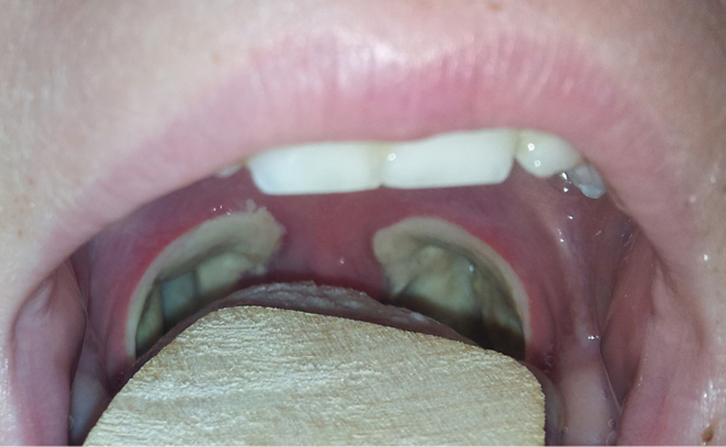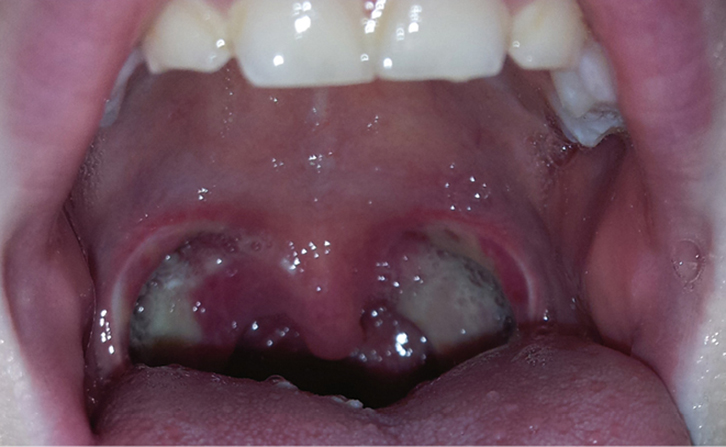Tonsillectomy is one of the most frequent operations performed by otolaryngologists in Australia and one of the most common elective procedures in all surgical specialties.1 Due to the shorter hospital stay and the trend towards no specialist appointments postoperatively, the general practitioner (GP) is increasingly becoming the first point of contact by patients for review of postoperative complaints. Furthermore, the average hospital stay post-tonsillectomy has significantly decreased from an average of 3.1 days in 19852 to 1.5 days in 1995 and now less than 24 hours.2
In 1995, Kuo et al found that there was a lack of awareness or understanding from patients about the usual postoperative course, despite written and verbal information given prior to hospital discharge. In 2000, Ghufor, Fosh, Sandhuet et al3 also identified that GPs faced difficulties with diagnosing postoperative infection, compared with symptoms of usual postoperative recovery, and with how to manage common post-tonsillectomy presentations.
Both studies also identified that there was an over-prescription of antibiotics by GPs for what are considered normal postoperative symptoms. A recent Cochrane review found no evidence to support a consistent, clinically important impact of antibiotics in reducing the main morbid outcomes following tonsillectomy.4
The antibiotic stewardship advises against regular antibiotic prescription post-tonsillectomy, and advocates that prescription should be limited to cases where there is a high clinical suspicion of infection.
As the majority of GPs have conveyed their desire for guidelines to manage post-tonsillectomy presentations,3 this article aims to describe the usual postoperative course after tonsillectomy and address many of the common reasons for presentation to general practices.
Common presentations
Fever
Fever within the first 24–48 hours is not uncommon post-tonsillectomy. The reason for this is still poorly understood; however, theories include transient bacteraemia, anaesthetic agents and an inflammatory response to tissue injury.5 Anand et al found no association between fever and positive throat and/or blood cultures from the tonsillectomy sites. The literature reports that a fever after tonsillectomy can occur in as many as 50% of patients during the first 24–48 hours post-tonsillectomy.5 A transient fever that quickly returns to normal should not be treated with antibiotics. However, if fever persists it can indicate an infection and antibiotics should be considered.
Pain
Moderate to severe pain is expected post-tonsillectomy and is the most common presentation to GPs.1 Pain can be either unilateral or bilateral and, in 50% of the cases, is associated with otalgia. Otalgia often causes great concern for the patient and is frequently the reason for presentation to GPs. Pain can present as unilateral or bilateral and can persist for up to five days.6,7 Pain can be fluctuant and typically increases at about four to five days after an initial improvement. This corresponds with maximal wound inflammation.8
Analgesia regimes vary among otolaryngologists and the preferred pain management regimes will be discussed by the surgeon prior to discharge. However, regular, simple analgesia is recommended, and has been shown to effectively decrease pain and breakthrough analgesic requirements.9,10
A recent Cochrane report11 suggests there is high-quality evidence that non-steroidal anti-inflammatory drugs (NSAIDs) do not increase the risk of post-tonsillectomy haemorrhage; however, there is insufficient data to confirm this.11 The Cochrane review by Lewis et al11 does, however, report that NSAID use decreases postoperative nausea and vomiting. An alternative in adults can be selective cyclooxygenase 2 inhibitors such as celecoxib. Benzydamine hydrochloride (‘Difflam’ oral rinse) has been found to help with postoperative pain, including otalgia.12
In 2014, the Therapeutic Goods Administration (TGA) released a medicine safety update regarding codeine-based products for children undergoing tonsillectomy or adenotonsillectomy for obstructive sleep disordered breathing.13 After multiple deaths in the US secondary to codeine use post-tonsillectomy, a small subgroup of the population has been identified as ultra-rapid metabolisers of codeine. These patients are at higher risk of opiate toxicity.13 Codeine-based products should not be used in children after adenotonsillectomy, and health professionals should consider alternatives to these products.
Non-pharmacological treatments for pain are often forgotten. Many modalities have been shown to reduce pain; however, due to small numbers of research papers, they are excluded from recommendations. These include distraction, honey and ice.14
Oral intake
Only 55% of children will eat normally by the end of the first week after tonsillectomy.6 On discharge, a normal diet is often encouraged. Hall and Brodsky have reported a trend towards decreased nausea and improved parental perception of the child’s recovery when diet was not restricted.15 Two previous studies7,16 found that patients who ate a normal diet post-tonsillectomy have fewer secondary haemorrhages post-tonsillectomy than those on restricted diets. If children are struggling to eat and drink, and dehydration is a concern, oral rehydration ice-blocks are advisable. Refusal of all oral intake, including analgesia or despite analgesia, should be referred to the hospital where the surgery was performed for ongoing management.
Halitosis
Halitosis is a common presenting complaint to GPs post-tonsillectomy and is one of the most common symptoms leading to inappropriate antibiotic prescription. Castellano et al reported that halitosis occurs in almost 70% of patients and lasts 5.2 days on average.6 Halitosis alone does not constitute an infection, and patients and their family should be reassured that this is common. Chewing gum may improve halitosis for those concerned.
Appearance
Patients and parents often become concerned with the postoperative appearance of the tonsillar fossae as the white-yellow slough is often confused for pus. This appearance is due to inflammatory exudate and a fibrin clot developing over the tonsillar fossae.8 Figures 1 and 2 show the normal changing appearance of the tonsillar fossae at days three and 10.
 |
| Figure 1. Typical postoperative appearance on day 3 |
 |
| Figure 2. Typical postoperative appearance on day 10 |
Uvula oedema
Uvula oedema is common after tonsillectomy and can be the result of forceful manipulation during the operation or the disruption of lymphatic or venous supply during dissection of the tonsils.17 It can result in dysphagia or the feeling of something stuck at the back of the throat, a sensation that can be worrisome to patients. Oedema typically resolves spontaneously within a few days; however, oral steroids may be required in severe cases.18
Haemorrhage
Bleeding is one of the most common presentations to the GP2 and emergency department post-tonsillectomy.19 Secondary post-tonsillectomy bleeds, defined as any bleeding that occurs 24 hours or longer after surgery, is estimated to occur in approximately 2–5% of patients undergoing tonsillectomy.20 The incidence increases with age as well as being more common if the indication for surgery was recurrent tonsillitis.18,21 Although most episodes are self-limiting and minimal, some require medical or surgical intervention. In rare cases, bleeding can be catastrophic. Patients are encouraged to present to the emergency department if bleeding occurs; however, many still present to their local doctor.2,3,7
One recent study looked at which patients required intervention in order to identify those who may not require hospital admission.21 Examination of the oropharynx is vital. If there is any active bleeding or large clot sitting within the tonsillar fossa, the patient should be immediately sent via ambulance transport to the emergency department for admission and intervention. All patients with a history of bleeding should be referred to the emergency department; however, those who have a normal oropharyngeal examination (ie no active bleeding or clot in the tonsillar fossae, with the usual tonsillar slough only) may be counselled by the emergency department with no need for admission. Arora et al found no patient with a normal oropharyngeal examination after initial bleeding required intervention for further episodes of bleeding. In addition, children under six years of age are at lower risk of developing any significant haemorrhage.20
It is important to advise the patient and family that in the event of further episodes of bleeding they should present to the emergency department. After an initial bleeding episode, the risk of further bleeding is approximately 10%, which is twice the rate of those who have not had bleeding.21 Approximately half of the recurrent bleeding episodes occur within 24 hours after the first haemorrhage. All patients should be encouraged to rest and remain adequately hydrated.
Discussion
Diagnosing infections in post-tonsillectomy patients has previously been identified as a clinical dilemma for GPs due to a lack of understanding of the normal postoperative appearance and common postoperative symptoms.2,3 Features normally indicative of an emerging infection (ie appearance, fever and pain) are now known to be expected outcomes post-tonsillectomy. Although still controversial, it is suggested that a persistent fever accompanied by either increasing pain (despite analgesia) or cervical lymphadenopathy may indicate an infection and antibiotics would be appropriate.3,18
Despite written and verbal education given to tonsillectomy patients and their family prior to discharge, many still present to the emergency department and local doctor for postoperative concerns. This article has addressed the management of common presenting complaints in the hope of providing guidance for the GP. Better understanding of the common postoperative concerns will improve treatment decisions, advice and education of patients, and is likely to decrease inappropriate antibiotic prescription.
Author
Lauren Cooper BPhty, MBBS, Ear, Nose and Throat Principal House Officer, Ear, Nose and Throat Department, Ipswich Hospital, Ipswich, QLD. lncooper@icloud.com
Competing interests: None.
Provenance and peer review: Not commissioned, externally peer reviewed.